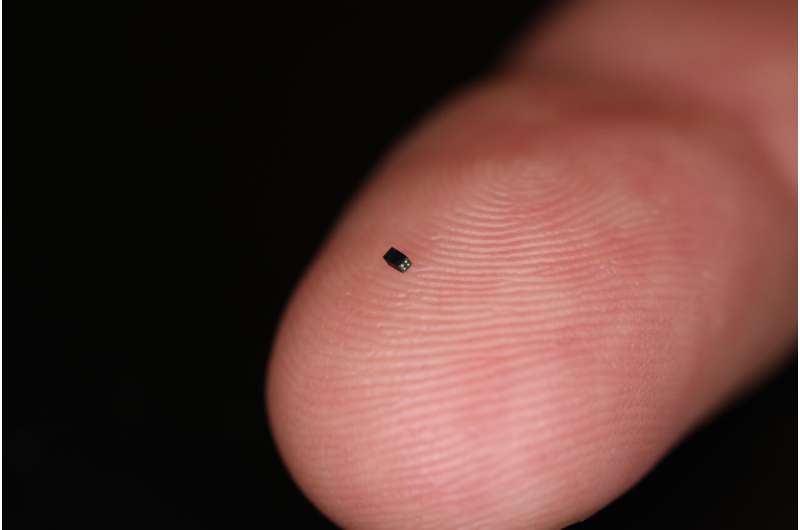Credit: OmniVision
OmniVision, a developer of advanced digital imaging solutions, has announced that it has won a place in the Guinness Book of World Records with the development of its OV6948 image sensor—it now holds the record for the smallest image sensor in the world. Along with the sensor, the company also announced the development of a camera module based on the sensor called the CameraCubeChip.
In its announcement on the company website, representatives of OmniVision suggest the main use for the new sensor and camera module is for medical applications. They claim the camera module can be affixed to disposable endoscopes to capture high-resolution images of very tiny parts of the body via blood vessels such as nerves, eye parts, the heart, the spine, gynecological areas, inside joints and in parts of the urological system.
Reps for the company note that the U.S. Food and Drug Administration has recently pointed out that cross-contamination issues related to the reuse of endoscopes requires prevention. The new camera, when used with new disposable endoscopes, solves the problem by removing the need to reuse such devices.
Features of the new camera with the tiny sensor include a 120-degree field of vision along with a focus range of three to 30 mm. The sensor has an image array that allows for 200 x 200 resolution and can process video at 30 fps. The camera also has an analog feature that transmits image data to a distance of four meters. The camera will also be noticeably cooler than traditional probes, allowing for longer periods of use inside of patients—it consumes just 25 mW of power.
The company also reports that the camera module has a wafer design and is just 0.65 mm x 0.65 mm square—and it is just 1.158 mm thick, making it approximately the size of a grain of sand. OmniVision reps further note that its small size allows its use in more than just endoscopes—it can also be used with guidewires and catheters. The difference in size will no doubt be much appreciated by patients who have had to undergo uncomfortable and sometimes painful invasive procedures with current technology. The company also hopes to expand the range of potential users to include veterinarians, dental practitioners and those in industry.
© 2019 Science X Network
























